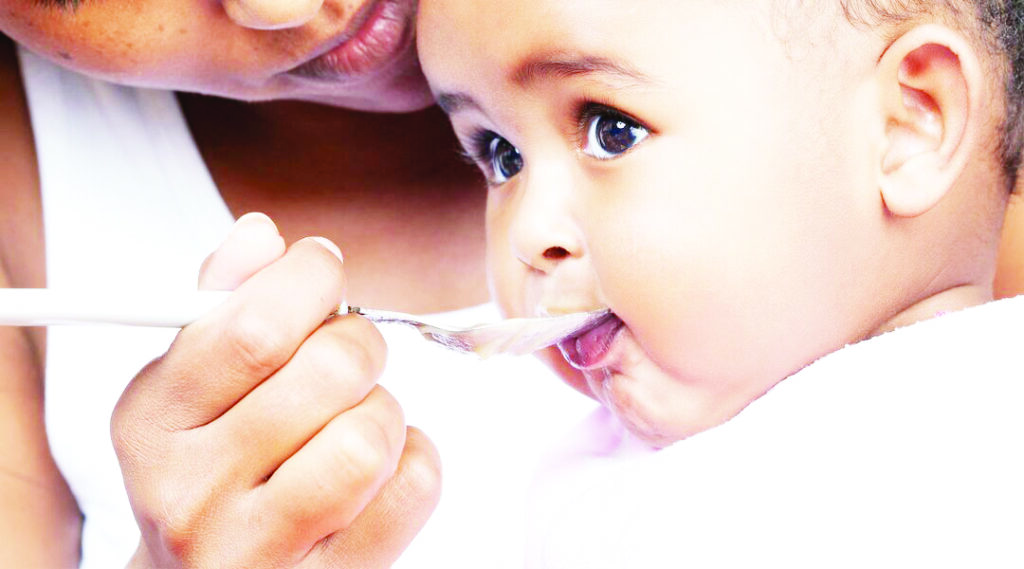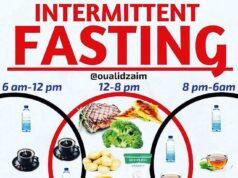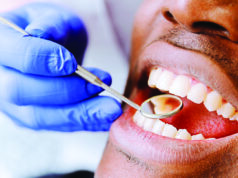By Dr John Kayongo and Benardate Okiria
New mothers always ask questions like; “what exactly should I feed my baby?” “How many times a day must I feed him?” “Should I make the food mushy?” and more, when their children make six months.
This is the first time in a human being’s life to eat and the baby is being introduced to food.
It is called complementary feeding, which is the recommended practice of introducing soft foods, porridges and liquids into your child’s diet, while continuing to breast feed.
This practice should not to be confused with ‘weaning’, which is the ceasing of breastfeeding. At six complete months, your baby’s energy and nutrient requirements exceed what breast milk provides.
This nutrient gap can only be filled by introducing food into your baby’s daily diet. As is said, “one cannot think well, love well, and sleep well, if one has not dinned well”.
All you want for your six month old baby is a healthy and enjoyable meal. So, here is a starter to going about it.
Porridge and pastes
Consider a variety of food groups to mix in your baby’s porridges. Different flour mixtures may be used for porridges.
The trick is in mixing flours from different food groups to make a complete and nutritious porridge.
For instance, a mixture of millet and soya flours includes an energy giving food (carbohydrate) and a body building food (protein).
When blending purees, mix some milk, butter, silver fish (mukene) powder or ground nut paste (odii) into the purees.
A puree of carrots mixed with milk is rich in protein, carbohydrate and essential nutrients such as calcium and vitamin A, important for your baby’s growing teeth and eyesight.
Pastes can be made from fruits such as bananas, mangoes, and avocado, vegetables such as beetroot, pumpkin and tomatoes, which are rich sources of iron and vitamin C.
These are critical for blood formation and boosting your baby’s immunity.

Acquaint yourself
Now is the time to actively acquaint yourself with knowledge in all food groups. Your baby will need a minimum of four food groups in a day.
There are three classes of foods: energy giving foods, body building foods and body protective foods. In each class of food, are seven food groups: cereals, grains, tubers, sugars, oils and fat, which provide energy for the body.
Legumes, nuts, milk and dairy products, meat and meat products, which provide protein for building tissue and cells in the body.
Fruits and vegetables, which provide minerals and vitamins that boost immunity and protect against diseases.
At any one meal, regardless if it is a porridge, a puree or mashed food, you must see to it that a minimum of three food groups is included.
Actively feed your baby
Schedule off time and track your baby’s meals. As you introduce new foods, patiently encourage your baby to eat.
Feeding an infant takes effort and should not include force feeding.
Introduce small amounts of foods, starting with three heaped tablespoons a meal. Monitor intake if your baby eats all the feeds offered. This is easier if your baby uses a separate plate and cup when feeding.
As your baby grows, you can increase amount of feeds offered to a quarter a cup (125mls) per meal. Do not forget to feed your baby at least three meals a day.
Small frequent meals are inevitable since your baby has a small stomach and can only eat small amounts at each meal.
Offer only nutritious snacks like an egg, fruit, and banana in between meals.
Scrape and flake meat
Your toothless six-month-old baby can eat meat, beef, chicken and fish too! Scrape all meats with a knife before cooking. This may look like peeling off small thin pieces of meat.
Hygiene
Hygienic practices ensure your baby’s food is safe to eat. You want to avoid diarrhoeas at this stage because an overnight up and down episode will get you to the ‘inpatient ward’ due to unhygienic practices.
Please, wash your hands when preparing your baby’s meals. Wash your hands after cleaning your baby’s bottom, and most definitely before feeding your baby.
Avoid sweets, candies, soft drinks and processed juices! They are a load of nothing but empty calories and offer no nutrient. For a small stomach, fill it with nutritious food stuffs only.
Do not offer thin or too thick feeds. Scoops of feed (porridge, puree, mashed food) should stay on the spoon.
Too thin foods load your baby’s stomach with a lot of liquid and fewer nutrients. Too thick foods are too sticky and difficult to swallow and cause choking.
+++++++++++++++++++++++++++++++++++++++++
Subscribe to our website and be the first to receive great Christian news, health information, pastoral guidance, environment, farming and many others. Also, Like and follow us on Facebook at Good News UG.






















